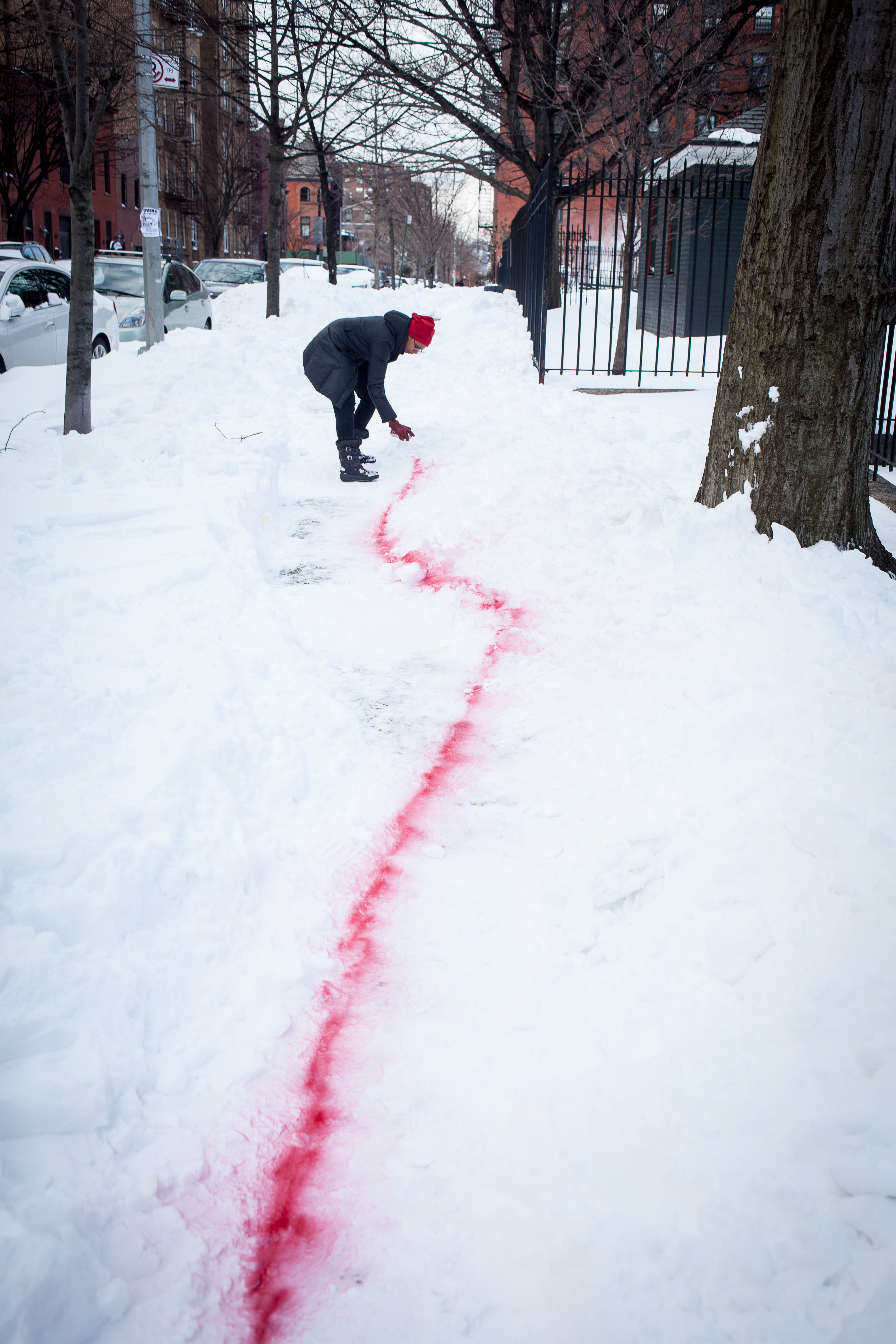“The past haunts at the periphery.”
Jelani Cobb, The New Yorker, August 2015
On October 24, 2013, my mother, Velma Wynn Johnson, passed away. My dad had passed away two decades prior. That day my brother and I inherited our childhood home and all its contents. I hadn’t thought much about what it would mean to be a homeowner in one of Brooklyn’s finest brownstone neighborhoods until I found a note from a real estate person shoved into the front gate one day after my mom died. It said:

I was shocked, enraged. And yet, also curious. Who was Todd? How did he know within one day my mom had passed? And, why was his desire to buy our house so desperate and aggressive that he felt entitled to violate my emotional space with his crumpled up note?
Though I was aware of rapid gentrification in my own neighborhood (who wouldn’t be!) and the inevitable cultural erasure and displacement of familiar people I knew and loved. I began to think more about what political and economic processes preceded this frenetic stage of gentrification and real estate speculation. I thought about deeper questions about what the experience of black land ownership in New York City (and America) was, its relationship to African-American wealth accumulation and our inherited economic and social condition in this country today. I soon discovered that what is happening now in my neighborhood had everything to do with the bank practice of redlining neighborhoods like Clinton Hill and Bedford Stuyvesant and racist housing policy since the depression when the first Home Owner Loan Corporation (HOLC) Red Line Maps were published in 1938.
A line is a curious concept. It indicates real or imagined partitions sometimes drawn to indicate imposed borders, timelines, ancestry, walls and most importantly, in the American context – property. People walk their property lines all the time. Why not walk the red lined areas of the maps?
The act of walking the perimeter of the 1938 Brooklyn Red Line Map was a way to demarcate territory and memorialize the fraught, oppressive, racist economic and political narratives of this city and country. Walking is an open-ended provocation, a poetic gesture that physically embodies where and how the red line was originally drawn to discover the way this policy has continued to haunt the landscape today. The Red Line Archive is a material culmination of the ephemeral process of walking, collecting artifacts and responding to what I observed and experienced that both illuminate and complicate the narrative of redlining and New York.
